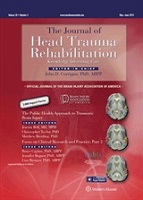Elevated movement path tortuosity in veterans with TBI

Keywords:
Fractal D, ambulation, traumatic brain injury (TBI), veterans, rehabilitation outcomes
Contact:
Abstract
In comparison to veterans without a history of traumatic brain injury (TBI), we hypothesized that veterans with past TBI would have slower walking speed and more path tortuosity, TBI symptoms, problems with spatial orientation, and poorer executive function. We used the Brief Traumatic Brain Injury Screen, Trail Making Test-B, Clock Drawing Test, walking speed, and distance and path tortuosity in 30 minutes of voluntary outdoor walking wearing a small Global Positioning Systems recorder as measures. Veterans with TBI walked shorter distances, and had greater path tortuosity than veterans without TBI. We concluded that traumatic brain injury has persistent symptomatic effects and significantly affects ambulation and spatial orientation years after the event. These findings corroborate and extend observations linking cognitive impairment and ambulation.
Citation
Kearns, W. D., Fozard, J. L., Schonfeld, L., Scott, S., & Marshall, K. (2015). Elevated movement path tortuosity in voluntary outdoor ambulation in community-dwelling veterans with a history of traumatic brain injury. Journal of Head Trauma Rehabilitation, 30(1), E8-14. doi:10.1097/htr.0000000000000021